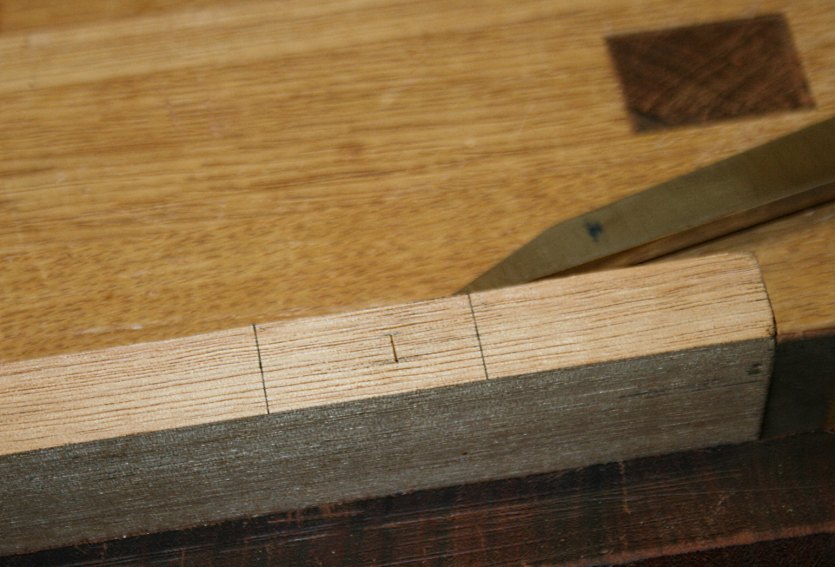I bought a set of three Ray Iles mortise chisels about a year ago, 1/4, 5/16, and 3/8 inches. I never did much with them; mostly just playing around and practicing chopping mortises. Recently I decided to use them on a large project. Around 200 or so mortises for mortise and tenon work. Many of these are 1/4 inch wide mortises. To save time I drilled out waste near one end of the mortise, then used the chisel to chop out the mortise. I couldnít seem to center the chisel on the drilled hole. I was always just a little off, one side or the other. Frustrating, and I thought my technique needed improvement. So I practiced on scrap, and still just couldnít get that chisel centered on the drilled hole. Finally I did what I should have done much sooner: I measured the width of the chisel with a micrometer. What a surprise! The 1/4 inch Ray Iles chisel measured at .268 inches (s/b .250). Thatís .018 wider than specification. That seems rather much to me. Itís noticeable if trying for a snug mortise/tenon joint. Yes I can compensate for the difference with my tenons, but I would rather have a true .250 wide chisel. Is this oversize normal for a mortise chisel? Normal for the Ray Iles mortise chisel? I have other standard bench chisels that are pretty much dead on .250. Has anyone out there experienced this problem? Is it even a problem or am I being too picky? Is this a manufacturing defect or deliberate for some reason unknown to me?
The other two Ray Iles chisels are also a bit wide, but not nearly as much. The 5/16 measures at .322 and s/b .3125. Not too bad. The 3/8 measures at .379 and s/b .375. Very close. I have no qualms about using either of these two. Itís only the 1/4 inch that I am unhappy with.





 Reply With Quote
Reply With Quote









